- Home
- Kathy Reichs
Swamp Bones
Swamp Bones Read online
Swamp Bones is a work of fiction. Names, characters, places, and incidents are the products of the author’s imagination or are used fictitiously. Any resemblance to actual events, locales, or persons, living or dead, is entirely coincidental.
A Bantam Books eBook Original
Copyright © 2014 by Temperance Brennan, L.P.
Excerpt from Bones Never Lie by Kathy Reichs copyright © 2014 by Temperance Brennan, L.P.
All rights reserved.
Published in the United States by Bantam Books, an imprint of Random House, a division of Random House LLC, a Penguin Random House Company, New York.
BANTAM BOOKS and the HOUSE colophon are registered trademarks of Random House LLC.
This book contains an excerpt from the forthcoming book Bones Never Lie by Kathy Reichs. This excerpt has been set for this edition only and may not reflect the final content of the forthcoming edition.
eBook ISBN: 978-0-553-39518-1
Cover art and design: Carlos Beltrán
Author photograph: Marie-Reine Mattera
www.bantamdell.com
v3.1
Contents
Cover
Title Page
Copyright
Chapter One
Chapter Two
Chapter Three
Chapter Four
Chapter Five
Chapter Six
Chapter Seven
Chapter Eight
Chapter Nine
Chapter Ten
Chapter Eleven
Acknowledgments
Other Books by This Author
About the Author
Excerpt from Bones Never Lie
Chapter One
March. Barely spring, yet the unseasonable Florida humidity made me feel like I’d disembarked from my flight into a Rottweiler’s mouth. For the hundredth time since arriving, I berated myself for choosing the Everglades as a vacation destination. My hair was giving me a big thumbs-down.
I had no way of knowing at that point that lank locks would turn out to be the least of my worries. That my vacation would quickly descend to a dark and grisly place. But not yet. My first hour in the glades, I was just hot and bothered.
The Daniel Beard Research Center had been a missile site during the cold war and looked like it, despite now being painted a garish flamingo pink. The color really made the National Park Service logo pop. Pushing through the door, I applauded the overzealous air-conditioning. My sweat-slicked skin instantly goose-bumped up, but my limp ponytail was too far gone to rally.
I crossed the public area and headed toward the business side of the building. A woman behind a scarred wooden desk tracked my approach. Beige hair, beige skin, coral mouth. A stern expression said she took her gatekeeping duties seriously. Really? The South Florida Natural Resources Center needed protecting?
“Dr. Tempe Brennan.” Cheerful as I could muster. “I’m here to see Dr. Robbin.”
“I don’t have you down as a visitor.” Never breaking eye contact to consult a list.
I smiled disarmingly. The gatekeeper did not.
I kept smiling doggedly until my opposition broke and said, “Bird lady’s in Lab B.” Swiveling a clipboard to face me. “John Hancock.”
After signing, then staring into a beady camera eye that produced a visitor’s badge, I proceeded down the hall, a tiny image of my unsmiling face stuck to my breast. Wall-stenciled arrows got me to Laboratory B. Through the door’s small rectangular window, I spotted a petite brunette bent over a stainless steel gurney.
I knuckle-tapped the glass, and the woman looked up and squinted. With recognition, she lowered her mask to reveal a mile-wide grin. Glad to see me or amused at my wilted appearance? The woman beckoned with a gloved hand.
The lab smelled of chemicals and decay, a familiar blend evoking thoughts of work, not sun and sand. Fortunately, this errand wouldn’t take long—I was just stopping to pick up the keys to my hostess’s house. The latest Jodi Picoult novel waited in a beach bag in my carry-on. Goodbye winter shoes, hello flip-flops.
“Tempe!” Lisa Robbin shot forward to embrace me, a gesture that, given her size, landed her head somewhere around my midsection. I did the awkward quick-squeeze thing non-huggers do.
“Sorry I couldn’t meet you at the airport as promised. I know it’s a hassle to cab all the way out here. But I just received a record number of packets.” Lisa’s hand fluttered toward the examining table, which contained seven lumps resembling compressed, dehydrated roadkill.
Dr. Lisa Robbin was for the birds, not just by name but also by mannerisms and calling: she was head of the Smithsonian Feather Identification Lab, and a pioneer in forensic ornithology. She and I had met while consulting on a case in South Texas. A bus carrying an exotic bird smuggler and his booty had gone over a cliff and exploded in flames, incinerating all those on board. I’d taken the human bones. Lisa had taken the talons and beaks.
Not as bizarre as it sounds. Lisa and I both analyze the dead too compromised for normal autopsy. In her case, necropsy, since her subjects are nonhuman. We work the skeletal, mummified, decomposed, dismembered, mutilated, or, in the bus crash recovery, charred to a crisp.
As a forensic anthropologist, I am a specialist in the human skeleton. I study the bones of the visually unrecognizable and the unidentified, searching for indicators of age, sex, race, and height. I observe peculiarities and anomalies. Anything to give the remains a name and, if necessary, a manner and time of death. Frankly, I’m not sure what Lisa does with her birds.
We’d bonded over the bus crash victims, passing bone fragments back and forth, human to me, avian to her. I liked her. After I’d returned home to North Carolina, and Lisa to Washington, D.C., we’d maintained contact, “birds of a feather” in male-dominated fields.
“I’m so glad you’re here!” She tipped her head, quick and sparrowlike. “I know we’d talked about a visit but wasn’t sure you’d ever make it.”
My concept of vacation usually involves Bahamian blue water, ocean breezes, and a whole lot of sand. But Lisa’s re-invitation had hit my inbox during a perfect storm of frustrations: An argument with my department chair at UNCC. A run-in with a testy prosecutor concerning my report on his homicide victim. Dietary issues with my cat, Birdie, that meant new carpeting in the parlor. A blown timing belt on my Mazda during rush-hour traffic.
It was that last one that did it. After two hours inhaling eau de I-77 waiting for AAA, out of boredom I hit the travel app on my iPhone. Life lesson on why you don’t impulse-plan vacations. Rage booking can lead to swamps and leeches instead of waves and beaches.
“Calgon, take me away. To a predator-infested swamp,” I half joked.
“Aw, c’mon. The Everglades rock. You’ve never seen such a gorgeous variety of native birds.”
I knew increased knowledge of Florida’s indigenous feathered friends was coming my way. Guessed life would have continued just dandy without it.
“I have all kinds of fun planned.” Lisa really did chirp. “And when I have to work, you’ve got full use of my car.”
“I thought your normal beat was up in our nation’s capital,” I said, allowing my carry-on to slip from my shoulder and drop to the floor.
She laughed. “I came to Florida to avoid the humidity in Washington, D.C.”
“Seriously?”
“No. I jumped at the chance to do something other than bird strikes.”
“There’s an avian labor issue? Crows won’t fly until they get lunch breaks during the workday?”
“Bird contact with airplanes.” Rolling her eyes at my lame attempt at humor.
“Ouch.”
“Exactly. The birds never win.”
“I thought you identified feathers in the Smithsonian’s anthro
pological collections.”
“Feathers on ancient masks and clothing constitute a small part of what I do. But the Feather Identification Lab has interagency agreements with the Federal Aviation Administration, the Air Force, and the Navy. Most of our work involves bird strikes.”
“They occur that frequently?” Add avian kamikazes to my growing list of travel concerns.
She nodded. “Birds put US Airways flight 1549 in the Hudson River. Even Wilbur Wright had a bird strike. Last year our team processed over forty-five hundred samples. Around eighteen a day—even more during spring and fall migration.”
“Good lord. How do you manage to keep that pace?”
She threw a look toward her “packets.” “Smaller samples. We rarely get complete bodies. Sometimes I’ll get whole feathers or some bones, but often my sample consists of nothing but a smear wiped from an aircraft exterior. What we call a snarge. With a snarge, cataloguing only takes an hour.”
Snarge. Ornithologists get all the fun words.
“We partner with a lab to analyze the DNA.”
“And the point is?”
“If we can ID the species that are the culprits, an airfield can adjust.”
“How?”
“Move a pond, stop spreading grass seed, do what it takes to make the environment less attractive to that particular species. Since most bird strikes occur on takeoff and landing, managing the airfield’s immediate area can go a long way toward reducing risk.”
“How many airports does the Everglades have?”
“None that concern me. I’m here on a different project.”
I must have looked confused.
“The birds here are victims, not perps.” Again gesturing to the remains. “The Everglades has a Burmese python problem.”
“Pythons. As in alarmingly large serpents?” I wouldn’t call it a phobia, but I’m not overly fond of snakes. Slithery moves. Cold creepy eyes. You can’t trust something that doesn’t blink. “I didn’t know pythons lived in Florida.”
“They’re recent intruders. Many escaped into the swamp in 1992 when Hurricane Andrew wiped out Homestead, the nearest town, which was once a hub for breeders and importers. That’s where my place is, by the way. Homestead’s a mostly agricultural southern suburb of Miami, stretching between Everglades National Park and Biscayne National Park.”
“At least it wasn’t idiot pet owners releasing exotics into the wild.”
“There’s that, too. Morons who think constriction is cuddly and buy pythons as pets. Except when little Squeezy hits twenty feet he isn’t so lovable anymore. The disenchanted owner dumps him in the Everglades and drives away. Upgrade for the snake. Not so good for the rest of the glades population.”
My gaze roved the packets. Okay. The lumps looked a little bigger than what a jet engine would leave behind.
Lisa kept talking.
“Since Burmese pythons are threatening to become the top predator in the Everglades, the National Park Service has asked for help in identifying at-risk birds.”
I looked at the dried masses on the table.
“You’re examining the stomach contents of a python?”
“Twelve pythons, to be exact.”
“That’s a lot of dead snake.”
“The National Park Service hunts them. They’re trying to get a handle on the problem.”
“You necropsy every snake?”
“I don’t. Dr. Aaron Lundberg does. He’s a park ranger and wildlife biologist over at NPS. As the bird expert, I just get the stomach contents, sometimes a section of intestine.”
“What’s Lundberg hoping to learn?”
“Everything. Growth, health, diet, reproductive behavior. I’m focused on preferred snack foods.” With gloved fingers, she gently pried apart one of the smaller dehydrated masses. Other than a beak, a talon, nothing solid remained, just a matting of hair and feather parts. “That used to be a wood stork. Mycteria americana. Stood forty-five inches tall, with a wingspan of sixty to sixty-five inches. It’s endangered.”
“Jesus.”
“Mature Burmese pythons eat maybe once a month, then hunker down to digest. Metabolism occurs quite rapidly.”
“Meaning you don’t usually get bones?”
“Not unless the snake is caught right after it has ingested. I mostly rely on feathers.”
I leaned closer for a better view. “I don’t see any feathers on this one.”
“Birds have two types of feathers—vaned, which form the outer layer, and down, which lie underneath the vaned. For this recovery I’ll use magnification to view the downy parts. They carry distinct species characteristics. Mites, the amount and distribution of pigment, the node shapes. Differences in feather microstructure set bird groups apart. It’ll take a little work, but I’ll nail this baby.”
“I have no doubt.”
Lisa glanced at the wall clock. “I’ll need ten minutes to finish up here. Then I’ll take a break and get you on your way.” She hooked a thumb at the fume hood. “I save the easy cases for last. Those over there aren’t so tidy but they’ve got more to work with. Literally. Meat, feathers, bones. Have a look.”
While Lisa resumed prying apart the goodies on the gurney, I crossed to the fume hood. The smell of putrefying flesh was much stronger up close. Five specimens lay arranged in chronological order. Each was labeled with a field number and site name, and with GPS coordinates indicating the location of its recovery.
These masses were more oozy and less homogenous than the lumps on the table. In some I could make out individual vaned feathers and small bones. In one, a furry ringed tail. I picked up a probe and teased a bone out of a packet labeled #1032-27 BIG CYPRESS. Yep. Raccoon. Next one was fox. I was feeling smug.
“I’ll introduce you to Aaron while you’re here.” Lisa’s words came out muffled by her mask. “He’s quite a character.”
“The only introduction I want is to a big cheeseburger.” I hadn’t eaten since leaving home for the Charlotte airport, five hours ago. It was early for lunch but I was starving.
I shifted to #1976-32 BOGGY KEY. Saw one fragment of bone. Recognized it as bird.
The fourth carcass was that of a decent-size doe. Mother of God. That was one ambitious snake.
The final set of remains showed more advanced decomp and smelled far more rank. I breathed through my mouth as I bent over #4715-59 HARDWOOD HAMMOCK. Black feathers. Raptor beak. I was going with vulture.
As I straightened, a tiny segment of bone caught my eye. The shaft was wrong for bird, the outer tube too thick in proportion to the hollow interior.
Definitely not avian. I peered closer. Noted the patterning on the bone’s outer surface.
My heart tossed in a few extra beats.
What?
Tightening my grasp on the probe, I poked deeper into the putrefied thing that had once been a bird. Into its stomach. Saw undigested skeletal elements. Apprehension climbing, I extracted several.
“Almost done!” Lisa sang.
Grabbing a long pair of tweezers, I pulled bones until I had a small pile.
Breath suspended, I rolled each this way and that, noting anatomical details.
And felt a rush of adrenaline shoot through my body.
Chapter Two
So began the vacation that never was. I told myself I’d soon be snorkeling in Biscayne Bay. But on hearing what I’d found, Lisa had extracted a promise that I stick around until she handed this off to the authorities.
I looked like an oversize scarecrow in Lisa’s tiny borrowed lab coat. The thing hit me mid-thigh and mid-forearm. The gurney had been cleared of everything but #4715-59 HARDWOOD HAMMOCK. The bird carcass lay to one end, my grisly discovery to the other.
Once again, Lisa and I were positioned on opposite sides of our subject, handing off bones to the correct expert. Taking shape in front of me was a small human foot. Eight phalanges, three metatarsals, a fragment of calcaneus, and one partial cuneiform. I estimated we’d recovered roughly
one third.
“Here’s the last.” Lisa handed me another item teased from the turkey vulture’s gullet. “It’s remarkable how much a human metatarsal resembles a Cathartes aura tarsometatarsus.”
“And how these bad boys possess the appetite of Hannibal Lecter,” I said.
“And the smell of a teenage boy’s sneakers.”
I passed on the obvious foul fowl joke. Hunger headache was joining my list of discomforts. Unfair, but I blamed all my woes on the Everglades.
I was tightening the alignment of the foot bones when the door opened and three men strode into the room. The reinforcements we’d called for had arrived. The waft of male sweat gave the putrefaction a run for its money.
The largest of the trio wore a brown uniform bearing a Miami-Dade Police Department logo. A plaque on his shirt gave his name as T. Yellen. A gold sheriff’s department badge declared Yellen’s rank to be that of sergeant or higher. A bad mustache evoked the seventies. A substantial belly suggested a love of fast food.
The other two wore green park rangers’ uniforms. One was short, with Earl Grey eyes behind rectangular, silver-framed glasses, and a seriously lopsided haircut. I could see him cruising a farmers’ market in a tie-dye and Birkenstocks, an NPR tote over one arm. I guessed he was the wildlife biologist, Dr. Aaron Lundberg.
The other guy was too tanned and too groomed, and had a “stud legend in my own mind” demeanor about him. Black hair. Blue eyes. A physique that filled his uniform nicely. On his chest was a Department of the Interior badge identifying him as Scott Pierce, Everglades National Park Law Enforcement.
Lundberg, the biologist, and Yellen, the sheriff, were arguing, and appeared to have been at it for some time.
“Pythons do not attack humans,” Lundberg said, frustrated, as though he’d repeated the statement again and again.
“Goddammit, Aaron. Your friend here says she’s got an eighteen-foot snake with human parts in its belly.” Yellen looked red-faced and grim. “I’ve been dreading this day since the damn things first started showing up.”
“Didn’t happen,” Lundberg insisted.
“I’ve seen these bastards down hundred-pound gators and deer. They can sure as hell handle one of us.” Yellen sounded equally fed up with the debate.

 Two Nights
Two Nights The Bone Collection: Four Novellas
The Bone Collection: Four Novellas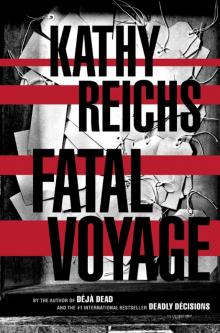 Fatal Voyage
Fatal Voyage 206 Bones
206 Bones Bones to Ashes
Bones to Ashes Terminal
Terminal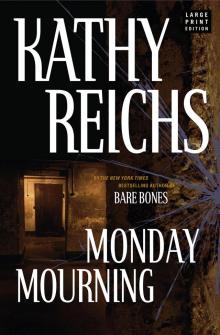 Monday Mourning
Monday Mourning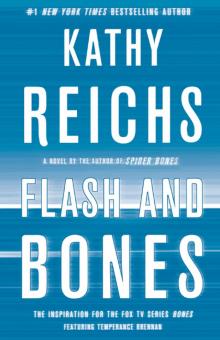 Flash and Bones
Flash and Bones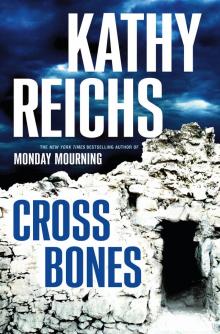 Cross Bones
Cross Bones Devil Bones
Devil Bones Break No Bones
Break No Bones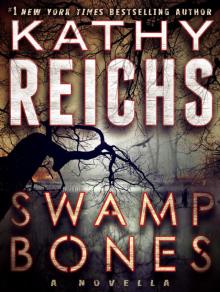 Swamp Bones
Swamp Bones Déjà Dead
Déjà Dead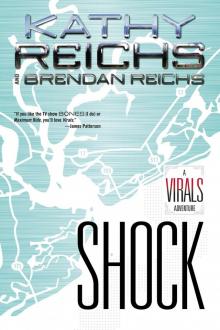 Shock
Shock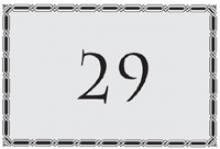 Spider Bones
Spider Bones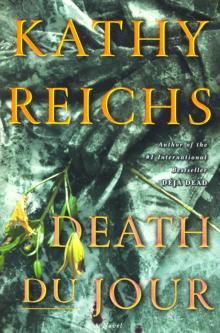 Death Du Jour
Death Du Jour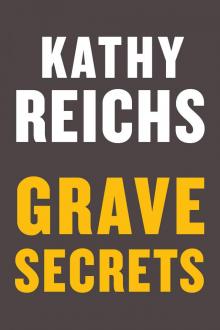 Grave Secrets
Grave Secrets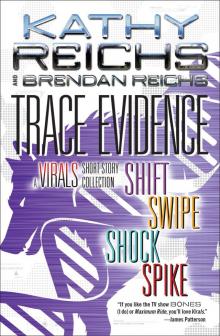 Trace Evidence: A Virals Short Story Collection
Trace Evidence: A Virals Short Story Collection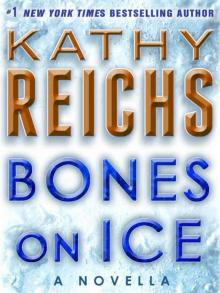 Bones on Ice
Bones on Ice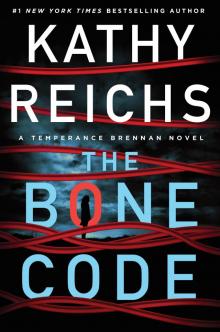 The Bone Code
The Bone Code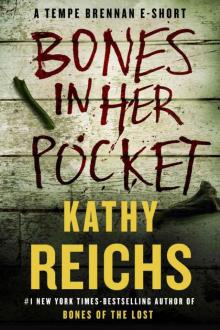 Bones in Her Pocket
Bones in Her Pocket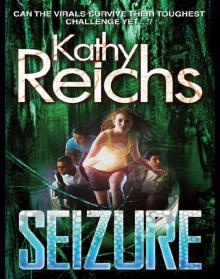 Seizure:
Seizure: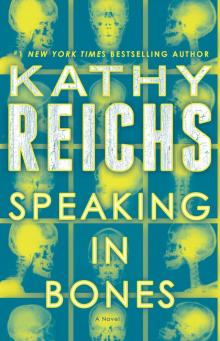 Speaking in Bones
Speaking in Bones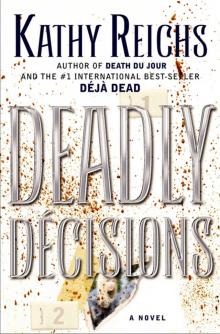 Deadly Decisions
Deadly Decisions Spike
Spike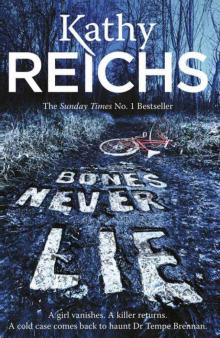 Bones Never Lie
Bones Never Lie Bones of the Lost
Bones of the Lost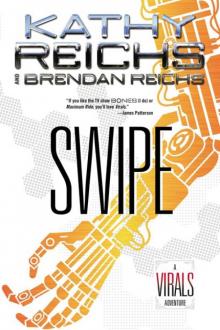 Virals 03.5 - Swipe
Virals 03.5 - Swipe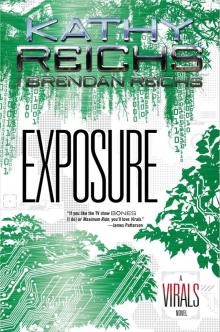 Exposure
Exposure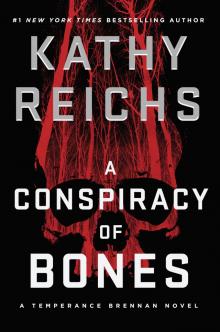 A Conspiracy of Bones
A Conspiracy of Bones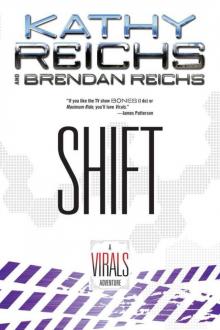 Shift (tory brennan)
Shift (tory brennan)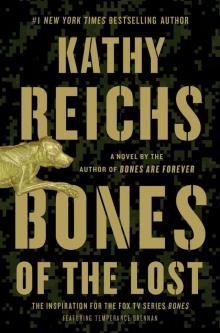 Bones of the Lost: A Temperance Brennan Novel tb-16
Bones of the Lost: A Temperance Brennan Novel tb-16 Virals tb-1
Virals tb-1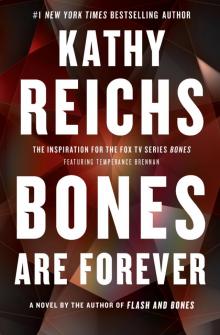 Bones Are Forever tb-15
Bones Are Forever tb-15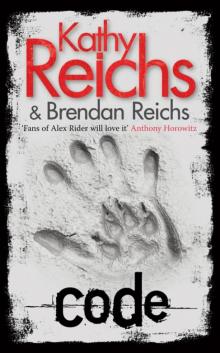 Code tb-3
Code tb-3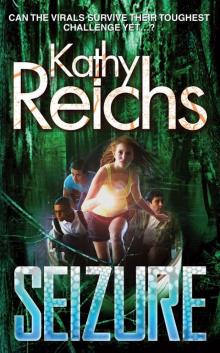 Seizure tb-2
Seizure tb-2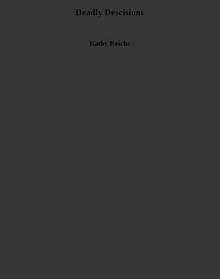 Deadly Descisions
Deadly Descisions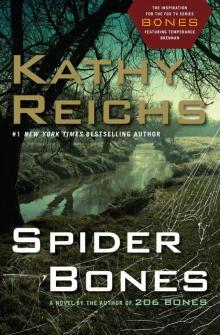 Spider Bones: A Novel
Spider Bones: A Novel